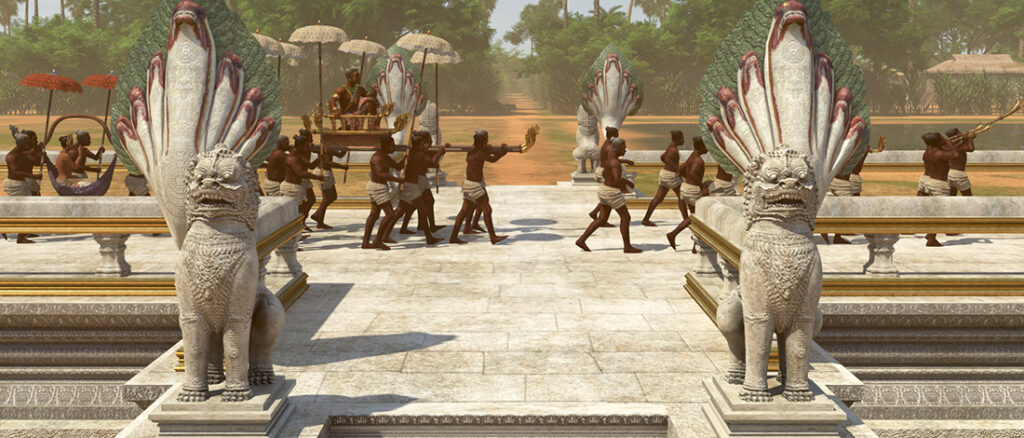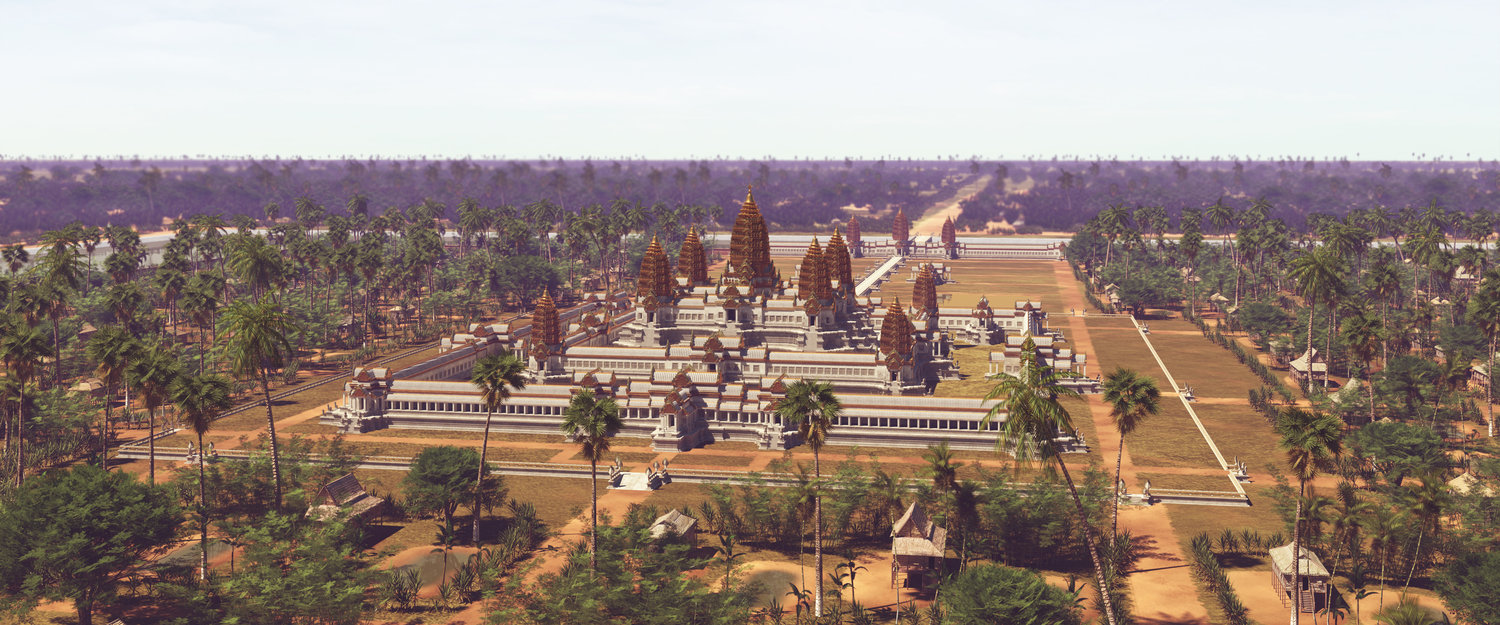I have had the pleasure of exploring and investigating the digital humanities project titled, Virtual Angkor. This project focuses on bringing to life the ancient Cambodian city of Angkor through the use of 3D modeling and virtual reality (sorta).

This project was very honest with the struggle of finding valuable sources about this topic, specifically written one from this period of time. Therefore, they ended up relying heavily upon Zhou Daguan’s A Record of Cambodia which was a first hand account of Zhou’s (a Chinese diplomat) stay between 1296-1297. Although this provides a very interesting look into Khmer society, the authors made sure to recognize that Zhou’s account was from a perspective of an outsider and therefore can have significant bias.
They then used this source, and some archeological information, to slowly piece together not only the buildings and streets of this once great city but the daily activities that would take place there. Once they had some idea of what those things looked like they then mapped the city using archeological surveys, modeled the city in 3D, ran simulations on the foot traffic of an estimated 25,000 people, 3D scanned artifacts, and finally animated the people and animals that populated this complex.
All of that work and processing then culminated in the production of intricate 360 degree panoramas (virtual environment) that can be explored on your phone but best viewed through headsets such as the Google Daydream. You can do this freely or directed through 3 major teaching modules that combine their work with supplementary readings culminating in discussions questions.

There were two major things that drew me to this project: the visual component and the truly interdisciplinary approach (although that may be standard with these projects). The former of the two reasons has been explained in more detail above but I find the visual representation to do so much for bringing to life this piece of ancient history. Allowing students and scholars the place themselves “on the ground” in an entirely different place and time but still feel there does so much for garnering interest and clarity. The second reason is pretty much how I put it but what exciteds me specifically is the fact that archeaology, history, and computer science (3D modeling) are coming together to do something only those groups could do together. Alone, no one discipline would be able to achieve such a complex project with this level of success. This is the kind of work that gets me excited to continue down this path of digital humanities.

